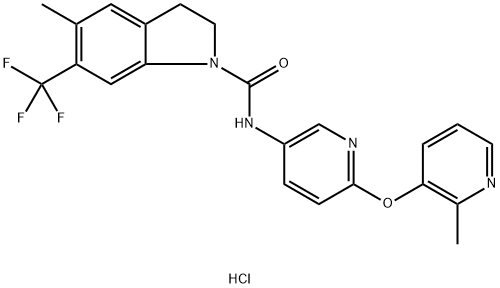1780372-25-9
 1780372-25-9 結(jié)構(gòu)式
1780372-25-9 結(jié)構(gòu)式
常見問題列表
|
Human 5-HT 2C Receptor 9.37 (pKi) |
human 5-HT 1A Receptor <5.3 (pKi) |
human 5-HT 1B Receptor 5.5 (pKi) |
human 5-HT 1D Receptor 6.32 (pKi) |
human 5-HT 1E Receptor <5.4 (pKi) |
human 5-HT 1F Receptor 5.35 (pKi) |
Human 5-HT 2A Receptor 7.01 (pKi) |
human 5-HT 2B Receptor 7.2 (pKi) |
Human 5-HT 6 Receptor 6.5 (pKi) |
Human 5-HT 7 Receptor 5.64 (pKi) |
SB 243213 dihydrochloride shows little affinity (pK
i
<6) for cloned human 5-HT
1A
, 5-HT
1B
, 5-HT
1E
, 5- HT
1F
and 5-HT
7
receptors. It shows weak affinity (pK
i
<6.5) for the cloned human 5-HT
1D
and D3 receptors and moderate affinity (pK
i
=6.7) for the cloned human D2 receptor.
SB 243213 dihydrochloride shows 100-fold selectivity over a wide range of neurotransmitter receptors, enzymes and ion channels.
SB 243213 dihydrochloride (0.1-10 mg/kg; p.o.; 1 h pre-test) dose-dependently and significantly increases the amount of time rats spent in social interaction over 15 min under brightly lit conditions and in an unfamiliar test box.
SB 243213 dihydrochloride (0.3 mg/kg; p.o.; 1 h pre-test) significantly increases time spent in social interaction.
| Animal Model: | Male Sprague-Dawley experimentally naive rats (220-300 g) |
| Dosage: | 0.1, 0.3, 1, 3, 10 mg/kg |
| Administration: | p.o.; 1 hour pre-test |
| Result: | Dose-dependently and significantly increased the amount of time rats spent in social interaction over 15 min under brightly lit conditions and in an unfamiliar test box. |